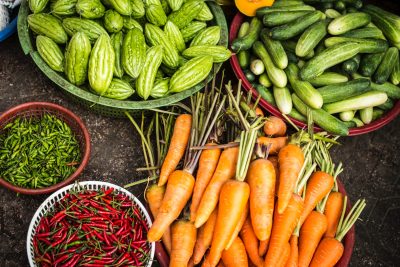Why Food Wastage?
Food wastage is rampant in a country like India where masses of people sleep hungry on a daily basis while there are thousands who throw away unconsumed food.
According to the CSR Journal, nearly 40% of the food produced in India is wasted. This is a staggering amount of food, equivalent to the food consumed by the United Kingdom. According to the Ministry of Agriculture, the estimated cost of wastage is almost Rs 1 lakh crore annually.
Sources of Food Wastage
- The biggest source of food wastage is our everyday meals cooked for the family
- Restaurants, Cafes, and eateries within corporate premises.
- Community functions like weddings, family get-togethers, corporate and school canteens, etc.
- Farmers’ produce due to lack of storage facilities
- Uncalled-for weather conditions destroying crops
Alarming Statistics
- As per the 2017 Global Hunger Index (GHI) Report, published by the International Food Policy Research Institute (IFPRI), India ranks 100 out of 119 countries – the lower the rank more the number of hungry people in the country
- Nearly 20 crore Indians sleep hungry every night
- Land degradation is another cause that leads to a diminished supply of edible food in the country
- Nearly 3000 children in India die every day due to malnutrition
What is Being Done to Curb Food Wastage?
While there are a number of NGOs that are working relentlessly to help the needy get the food that is likely to be wasted from the sources mentioned above, the statistics have not really improved. Some research in this area reveals that there is still a gap between the source of food wastage and the source of hunger.
Addressing this gap mitigation not only requires spreading awareness among the masses to help the NGOs working for the cause but also requires the intervention of technology to help bridge this gap.
Food Donations to curb Food Wastage
The food and beverage industry had seen a revolution when Zomato and Swiggy started onboarding restaurants and cafes around the country on a single platform. Zomato transformed from an app that hosted reviews of food connoisseurs to a food delivery platform, along with Swiggy, both platforms have seen exponential growth.
Zomato recently acquired Feeding India which is striving to make India hunger-free. While this is a humongous task in itself the company has been progressively making strides to curb hunger in the country.
In February 2021, Serbia launched its first digital platform for food donations, Plate by Plate, in collaboration between Delhaize Serbia and the United Nations Development Programme.
Opportunity
We had earlier published a video to address the issue of food wastage at an individual’s capacity. You can view to check 7 ways of avoiding food wastage.
How can, however, technology help in avoiding food wastage?
Leveraging Data
Average Indian wastes 20% of the food items bought from the superstores while most often than not most of the food items are discarded once it expires. Here’s a solution to this problem –
Step 1 – Collaborate with Superstores and Kirana Stores to fetch data for
- Stock Received
- Stock Sold
- The expiry date for all food items
- Purchase Info – Customer number, items purchased, Expiry date for items
Step 2 – Send Notifications
- To customers – informing them of the items that are about to be expired
- To customers – informing them to donate the items to expired for immediate consumption by partner NGOs (or in Zomato’s case their CSR leg – Feeding India)
- To Superstores – informing them of their stock expiry
- To Superstores – informing them to donate the item at a discounted price and promise a 100% sale
Step 3 – Leverage Existing Logistics
- For already established companies leveraging their current logistics should not be a challenge
- This could seamlessly be combined into existing operations
Others
- Innovative methods of providing recipes to customers based on their existing soon-to-be expired food items could be suggested
- On a daily basis, the customer could be provided an option to notify the service providers to collect leftover food
Onboarding the Commoners
With a business model like Tinmen wherein home-cooked food is provided to people, a similar approach can be taken to ensure the consumption of extra food (potential waste) in the household. A network of such ‘certified’ households could be leveraged to provide food to the needy.
Collaboration with existing NGOs by leveraging their channel to serve the needy.
Challenges
Regulatory – How can one ensure food safety? A detailed study will be required to ensure the food thus provided (leftover or close to expiry) is safe for consumption
Logistic – While it is easy to leverage existing logistics for the players in the industry, this could be a big challenge for new entrants.
The idea can be developed further into a full-fledged business. Our preliminary analysis shows that the financials could flourish too if the idea is adopted.
Bottomline
Technology has been seen to transform lives around us. We can leverage technology and help create an ecosystem that will help India (and the world likewise) achieve its goal to be hunger-free.






Add comment